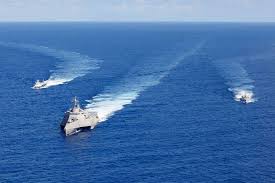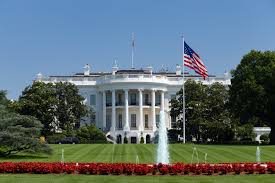Francis Tuschek, Staff Writer
China is deploying its largest naval fleet in regional waters in nearly thirty years, presenting a more significant threat to Taiwan than previous military exercises, according to the Ministry of National Defense.
In a statement in Taipei, ministry spokesperson Sun Li-fang indicated that the current naval deployment, which stretches from the southern Japanese islands to the South China Sea, is the largest since China’s military drills around Taiwan prior to the 1996 presidential elections.
China’s military has not commented on or confirmed any ongoing exercises. A chart shared by the Ministry of National Defense illustrates the flight paths of Chinese military aircraft around Taiwan over the last 24 hours.
Sun noted that the current scale of deployment surpasses that of the last four exercises around Taiwan and emphasized the ongoing threat, regardless of any official announcements regarding drills.
Senior intelligence officer Hsieh Jih-sheng reported no live-fire exercises in China’s seven “reserved” airspace zones, two of which lie in the Taiwan Strait, but noted a significant uptick in Chinese military activity north of Taiwan in the past day.
According to a Taiwan security source, approximately 90 Chinese navy and coast guard vessels remain in the region, which is described as “very alarming,” with implications for other countries in addition to Taiwan.
Hsieh explained that China’s presence in the First Island Chain—stretching from Japan through Taiwan and the Philippines to Borneo—serves to deny access to foreign forces. The ministry also indicated that China is constructing two “walls” in the Pacific, one at the eastern edge of Taiwan’s air defense identification zone and another further out, effectively attempting to transform the Taiwan Strait into an internal sea of China.
The ministry reported detecting 47 military aircraft, 12 navy vessels, and nine “official” ships—those associated with civilian agencies like the coast guard—operating around Taiwan in the last 24 hours. Of the 47 aircraft, 26 were active off the coast of China’s Zhejiang Province, six were in the Taiwan Strait, and 15 were in the southwest of Taiwan, as detailed in the ministry’s morning update on Chinese activities.
A senior Taiwan security source noted that the Chinese aircraft simulated attacks on foreign naval vessels and practiced intercepting military and civilian aircraft as part of a “blockade exercise.”
China has conducted two major rounds of military exercises around Taiwan this year. If another exercise occurs, it would be perceived as coercive and detrimental to diplomatic efforts, according to Heino Klinck, former deputy assistant secretary of defense for East Asia. He highlighted that the PLA’s expanding military drills are intended to desensitize Taiwan and its allies, potentially affecting their response times in the event of a real invasion.
The US is closely monitoring PLA activities in the region, with a State Department spokesperson urging China to avoid actions that could undermine regional peace and stability. They emphasized that President William Lai’s recent transit through US territories should not justify increased military pressure on Taiwan.
Former US Navy rear admiral Mark Montgomery noted that China is frustrated by Lai’s recent stopovers in Hawaii and Guam. He anticipates that the PLA will conduct further military exercises this winter, expressing concern that these expanding and increasingly complex drills pose a direct threat to Taiwan’s security. Montgomery urged the US and Taiwan to strengthen their bilateral relationship appropriately.



